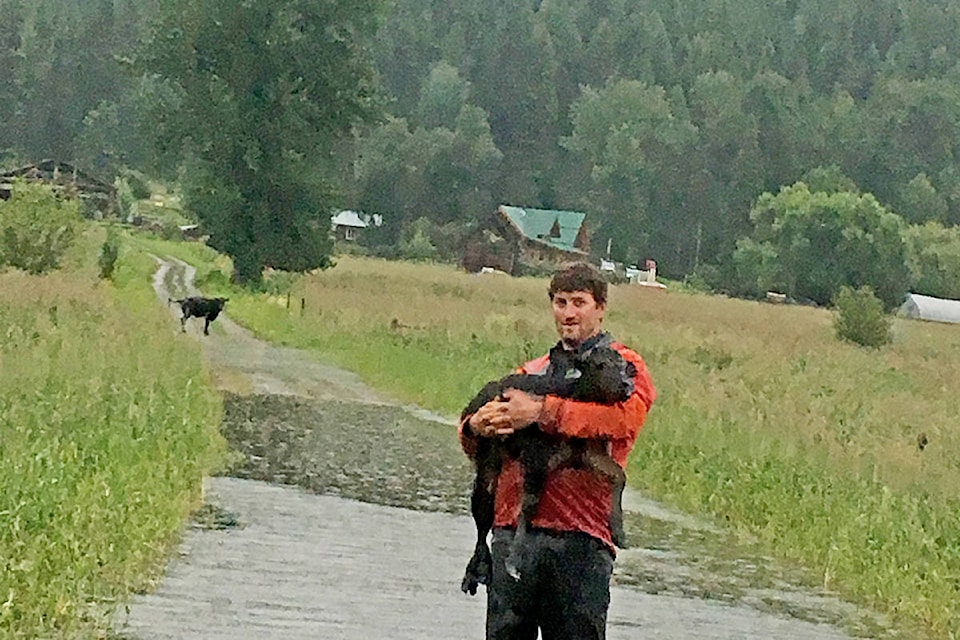The fascination of seeing a calf born is a tremendous motivator for children to participate in ranching activities.
It is not easy to witness the birth of a calf especially in a herd on a spacious pasture. Bothering the cows as they labour to deliver may make them move and slow down the delivery. Most cows like to be off on their own when they calve.
This year, with children being at home, has been a great opportunity to involve the young ones in observing and attending to the pregnant cows. Extra sets of eyes can be helpful for those animals—first calf heifers which might just have more difficulty.
One of the grandchildren lost their calf, but saved the mother, one of these first calf heifers.
Now a decision has to be made. Do we keep this “cow” in the herd or look for a more successful “calver,” one which won’t need assistance and is therefore a lower risk prospect as a mother cow?
Conversations with children about these production matters can be constructive for them. Making hard decisions to ship or harvest these animals can be hard but necessary to the economics of the business.
This seven-year-old, begged to “adopt” for while, a recent calf he thinks is cute and might be gentled because the mother can be approached out on pasture and is not dangerously protective of the calf which is a few days old.
Thanks to the rain, grandpa—me—has time to mentor this young rancher. He needs help sorting her from the herd and setting up a pen with grass, water and some close quarters where a little special feed (alfalfa pellets) will help to gentle the cow and her calf.
The desire to touch and pet the very young is strong in the kids. This is best done under supervision of an adult because the protective instinct, especially in a new mother, is very strong and we all know you have to watch your back when handling young calves.
This experience is good as safety is all important for both people and cattle alike.
Since this mother cow needs to be turned out on range to be bred, there may be a week or two when this calf can be gentled.
I am certain that one of the inspirations to “gentle” this calf comes from this young man’s cousin who can touch her cow and yearling out on pasture. The memory of careful handling and hand feeding of “treats” is strong for the cows.
Visiting children and our own alike, love to touch that cute and cuddly calf. So as long as the mother is at a safe distance, the child can approach a calf, especially if it is sleeping or sleepy.
READ MORE: Flooding enjoyed by Cariboo family
“Go slowly” when approaching the calf is the watch word, rarely heeded. Slower is faster if the goal is to actually not have the calf run away. Inevitably children are not that patient and the calf when approached springs away foiling the hope for touch.
Eventually the mother and the young one will come for the treat offered and the touch will be achieved.
Petting zoos come to mind where there is daily multiple interactions and the animals are gentle. Life on a large property with dozens or hundreds of cattle doesn’t permit this kind of handling.
But if one has to handle the cattle for health treatments some gentleness resulting from patient handling is an advantage. I think here about a neigbour who has the touch and can hold a cow’s head –in a cattle squeeze- and administer a needle between the layers of tissue in an eye infected with pink eye.
READ MORE: The big test and how to prepare for it
That same neighbour’s father, a longtime rancher, helped us “sweet talk” a milk cow from the Lower Mainland down a long ramp and onto a raft for transport across the lake to our homestead many years ago.
“Cattle whispering” we call that. My wish for my grandchildren is that they be “whisperers” when handling our livestock.
For myself, I wish for the time and patience to hold the hands of the young ones when they need it, as they skill up to turn rough stock into amenable herd members.
David Zirnhelt is a rancher and member of the Cariboo Cattlemen’s Association. He is also chair of the Advisory Committee for the Applied Sustainable Ranching Program at TRU.
editor@quesnelobserver.com
Like us on Facebook and follow us on Twitter
